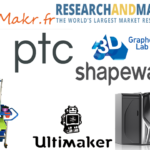

3D printing has, in the scope of a just a few years, moved from a technology on the periphery—primarily used by large companies for industrial manufacturing—to the mainstream—a technology on the minds, if not inside the homes, of consumers. The emergence of low-cost printers, accessible CAD software, and websites like Thingiverse and Shapeways mark an industry reaching a new stage of maturity. This unique moment, however, is not without its growing pains. As opportunities for companies and individuals to profit from 3D printing expand, claims of intellectual property theft are also on the rise.
In the past year alone, two cases of alleged theft have grabbed the headlines. In one, San Diego-based 3D printing company SD3D was accused of taking without permission a skateboard design placed on Thingiverse by the Italian designer Simone Fontana. In another case, the eBay seller just3dprint was embroiled in a public spat when it was accused of improperly downloading numerous designs from Thingiverse and then offering to sell products printed from those designs.

Two questions arise from these cases. First, is there anything improper about taking a design from a website like Thingiverse and selling products based upon those designs? Second, what can designers who put their designs online do to protect their intellectual property rights?
The answer to the first question is maybe. If a design is subject to copyright and has not been licensed by the designer, then a claim for copyright infringement may arise. Not all designs are subject to copyright protection. Copyright does not protect the purely utilitarian and so designs that are only functional in nature are not protected. (They may be eligible for patent protection but that requires applying to and receiving from Patent office a grant of patent rights.) Designs that are purely artistic or even contain artistic elements, however, are eligible for protection.
What can designers do to protect their intellectual property? First, in any public posting of their design, designers should make clear the terms upon which they are willing to license their work. Creative Commons licenses offer one easy means to do this. Second, designers must monitor how their designs are being used. Regular review of online marketplaces like eBay, Shapeways, Amazon, and Etsy is a must. Finally, if potentially infringing activity is detected, designers can either request the platform, such as eBay, remove the content or, if that does not work, pursue legal action.
Paven Malhotra is a partner at Keker, Van Nest & Peters in San Francisco, where his practice focuses on intellectual property disputes and complex commercial litigation matters.
If you're looking to get architectural 3D animation in the USA, our service provides an exceptional way to bring your architectural concepts to life through dynamic, immersive visuals. Through our platform, you can easily request high-quality 3D animations that showcase your designs in motion, offering a detailed view of your project from multiple angles and perspectives. Whether it's for a real estate development, a commercial building, or an urban planning project, our expert team ensures that every detail is captured in a visually compelling animation.
Through our website, you can seamlessly get architectural 3D animation tailored to your project’s specific needs. With our help, you can offer potential clients or investors an engaging experience that goes beyond static images. By integrating CGI animations with real-world settings, lighting, and textures, our team creates a lifelike experience that allows your audience to interact with your project as though it were already built. This service is perfect for presenting complex designs in a clear, visually attractive way that stands out in the competitive architectural market.




